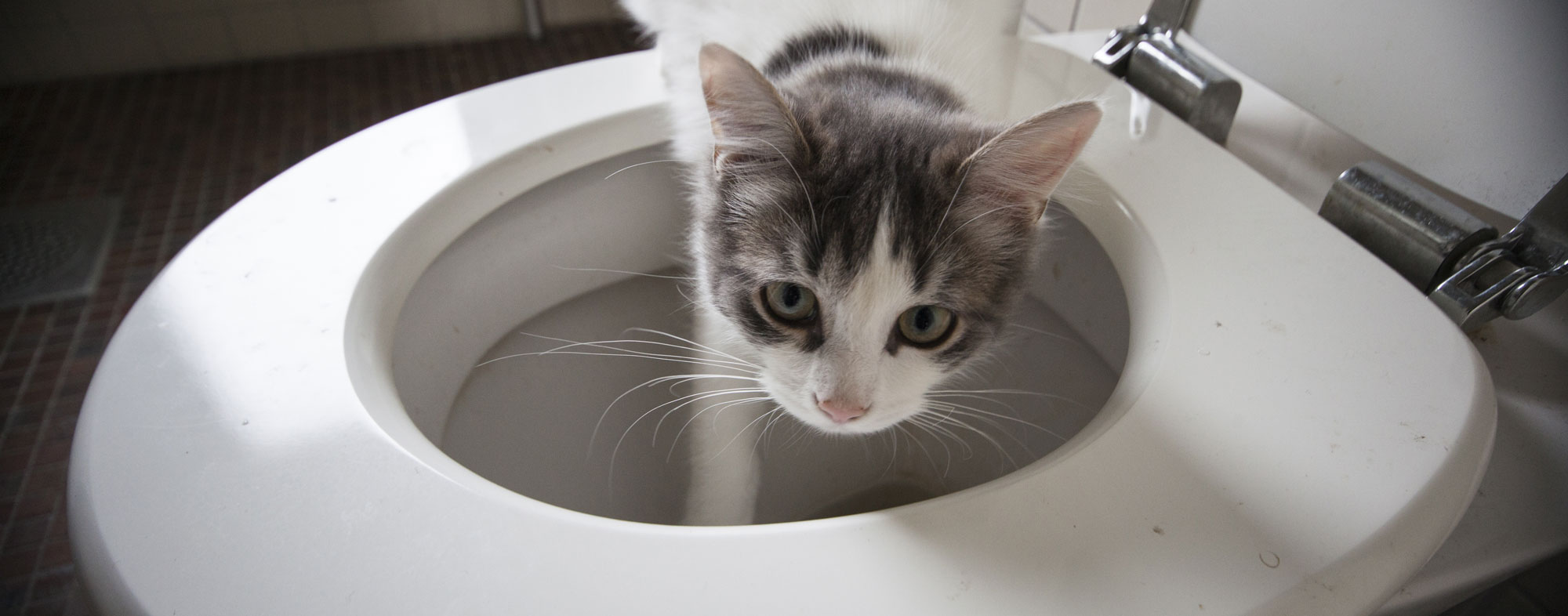Why You Mustn't Flush Cat Poop Down Your Toilet - Maintain Your Pipe Health
Why You Mustn't Flush Cat Poop Down Your Toilet - Maintain Your Pipe Health
Blog Article
Just how do you feel when it comes to How to Dispose of Cat Poop and Litter Without Plastic Bags?

Introduction
As pet cat owners, it's important to be mindful of how we dispose of our feline good friends' waste. While it might seem practical to flush feline poop down the toilet, this method can have harmful consequences for both the atmosphere and human health and wellness.
Environmental Impact
Flushing cat poop introduces unsafe microorganisms and bloodsuckers right into the water, presenting a considerable threat to aquatic communities. These impurities can adversely impact marine life and compromise water high quality.
Wellness Risks
Along with ecological problems, flushing feline waste can additionally position health and wellness threats to humans. Feline feces might consist of Toxoplasma gondii, a bloodsucker that can trigger toxoplasmosis-- a possibly serious health problem, especially for expecting ladies and individuals with damaged body immune systems.
Alternatives to Flushing
The good news is, there are much safer and more liable methods to deal with feline poop. Take into consideration the complying with alternatives:
1. Scoop and Dispose in Trash
One of the most common approach of taking care of feline poop is to scoop it right into a biodegradable bag and toss it in the trash. Be sure to make use of a specialized clutter inside story and deal with the waste promptly.
2. Usage Biodegradable Litter
Opt for eco-friendly feline clutter made from products such as corn or wheat. These litters are environmentally friendly and can be securely disposed of in the trash.
3. Hide in the Yard
If you have a yard, think about burying feline waste in a marked location away from vegetable gardens and water resources. Make certain to dig deep sufficient to avoid contamination of groundwater.
4. Install a Pet Waste Disposal System
Buy an animal waste disposal system particularly created for cat waste. These systems use enzymes to break down the waste, lowering odor and environmental impact.
Final thought
Responsible animal possession extends past providing food and sanctuary-- it additionally includes correct waste administration. By avoiding flushing feline poop down the commode and selecting different disposal techniques, we can reduce our ecological impact and safeguard human wellness.
Why Can’t I Flush Cat Poop?
It Spreads a Parasite
Cats are frequently infected with a parasite called toxoplasma gondii. The parasite causes an infection called toxoplasmosis. It is usually harmless to cats. The parasite only uses cat poop as a host for its eggs. Otherwise, the cat’s immune system usually keeps the infection at low enough levels to maintain its own health. But it does not stop the develop of eggs. These eggs are tiny and surprisingly tough. They may survive for a year before they begin to grow. But that’s the problem.
Our wastewater system is not designed to deal with toxoplasmosis eggs. Instead, most eggs will flush from your toilet into sewers and wastewater management plants. After the sewage is treated for many other harmful things in it, it is typically released into local rivers, lakes, or oceans. Here, the toxoplasmosis eggs can find new hosts, including starfish, crabs, otters, and many other wildlife. For many, this is a significant risk to their health. Toxoplasmosis can also end up infecting water sources that are important for agriculture, which means our deer, pigs, and sheep can get infected too.
Is There Risk to Humans?
There can be a risk to human life from flushing cat poop down the toilet. If you do so, the parasites from your cat’s poop can end up in shellfish, game animals, or livestock. If this meat is then served raw or undercooked, the people who eat it can get sick.
In fact, according to the CDC, 40 million people in the United States are infected with toxoplasma gondii. They get it from exposure to infected seafood, or from some kind of cat poop contamination, like drinking from a stream that is contaminated or touching anything that has come into contact with cat poop. That includes just cleaning a cat litter box.
Most people who get infected with these parasites will not develop any symptoms. However, for pregnant women or for those with compromised immune systems, the parasite can cause severe health problems.
How to Handle Cat Poop
The best way to handle cat poop is actually to clean the box more often. The eggs that the parasite sheds will not become active until one to five days after the cat poops. That means that if you clean daily, you’re much less likely to come into direct contact with infectious eggs.
That said, always dispose of cat poop in the garbage and not down the toilet. Wash your hands before and after you clean the litter box, and bring the bag of poop right outside to your garbage bins.
https://trenchlesssolutionsusa.com/why-cant-i-flush-cat-poop/

I ran across that write up on Don’t flush cat feces down the toilet when doing a search on the web. Sharing is caring. Helping people is fun. I cherish reading our article about Don’t flush cat feces down the toilet.
Start Now Report this page